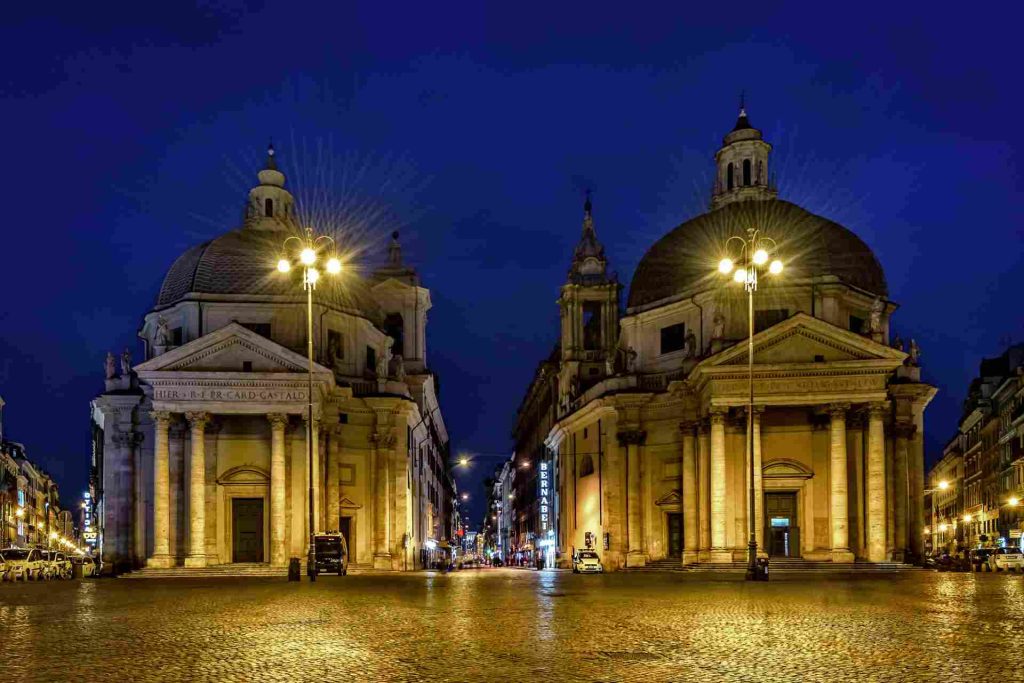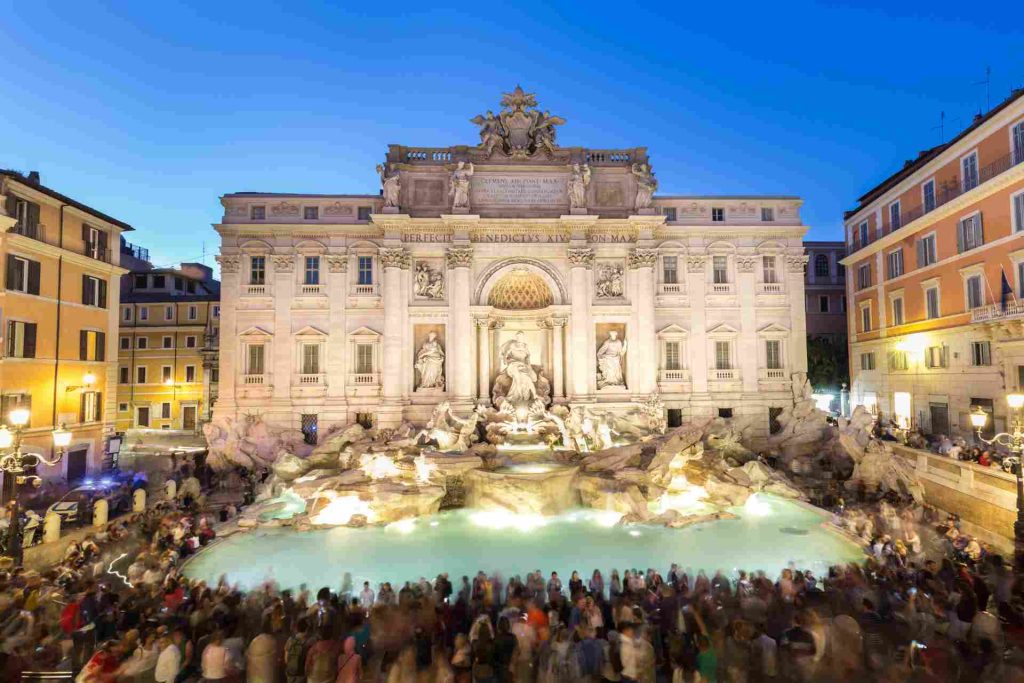Things to Do in Rome: A Perfect 14-Stop Itinerary
Get your comprehensive 14-stop itinerary for a memorable holiday. It contains all the best things to do in Rome, so you don't miss out.
The Eternal City is one of the most spectacular destinations in Europe. Here, you can experience ancient Rome, the Middle Ages, the Renaissance, the Baroque, and modern times blending before your very eyes. There are hundreds of things to do in Rome, regardless of whether you are interested in history, culture, art, gastronomy, or nightlife. Rome’s got you covered.
In this article, we’ll give you a comprehensive Rome itinerary with 14 key stops that you can follow to explore this magnificent city. (It’s also a great reference point if you decide to spend three to four days in Rome.)
Let’s start
Did you know you no longer need Roaming in Rome to connect and make calls?
To make your trip a unforgettable experience, we recommend that you forget about your operator’s roaming and secure your internet connection in the city with an eSIM for Rome.

1. Piazza del Popolo
If you choose to go on a guided tour of Rome, this spot in the city center is likely to be your starting point. If you arrive at it from the North side, you can enter through the Porta del Popolo—the gate redesigned in the 17th century to welcome Queen Christina of Sweden.

This famous square is like a gateway to Rome’s historic center. In the middle of it, you will find a striking Egyptian obelisk, also known as the Flaminian Obelisk. Emperor Augustus relocated this ancient structure from the Circus Maximus to Rome. It dates back to Ramses II’s time and is now a notable monument in the city center.
Around the obelisk, the square is enveloped by impressive architecture and notable buildings. This is where you’ll find Santa Maria del Popolo with its fantastic art collection. This church is the home of several masterpieces by Caravaggio, and the Chigi Chapel inside it was designed by Raphael.
This square also boasts the Twin Churches: Santa Maria dei Miracoli and Santa Maria in Montesanto. At first glance, these two churches seem identical, but they differ in the shape of their foundations.

2. Spanish Steps (Scalinata di Trinità dei Monti)
Take a short walk down the Via del Baubino and you’ll reach the famous Spanish Steps. There are 135 steps in this square, and they connect Trinità dei Monti church at the top and the Piazza di Spagna at the bottom. Their main purpose was to provide a connection between the Spanish Embassy and the Church. That’s how the stairs and the square got their name.

Today, these stairs are a gathering spot for locals and tourists. Sitting on these iconic stairs and watching people go by is a nice way to spend some time gathering your impressions about Rome. If you can, try visiting this place in April and May. Spring is when azaleas around the steps are in full bloom, which is a spectacular sight. Also, try to be there early in the morning if you want to avoid the crowds
3. Villa Borghese
Climb up the steps to visit Villa Borghese. This was originally a vineyard that Cardinal Scipione Borghese transformed into a wonderful park. Today, it is one of the most popular parks in Rome, packed with sculptures, fountains, and walking paths. It’s a peaceful corner in the bustling city.
Scipone was also responsible for creating the famous Galleria Borghese—a real treat for art lovers. The extensive collection includes pieces by Caravaggio, Bernini, and Raphael.
4. Piazza Navona
From the peaceful Borghese park, you can come down into the vibrant Navona Square. It’s packed with street artists, cafes, and seasonal markets. However, when it comes to architecture and art, it is famous for its Fountain of the Four Rivers, by Gian Lorenzo Bernini, and the Church of Sant’Agnese in Agone by Borromini, Bernini’s rival.

The Piazza Navona is on the site of the ancient Stadium of Domitian, so it has kept its original elongated shape. In ancient Rome, it was a stadium for athletic events, and it could hold up to 30,000 spectators, which is impressive even by today’s standards.
Caravaggio lovers can take a quick detour here to the San Luigi dei Francesi church, which features his famous paintings depicting the life of Saint Matthew.
5. Pantheon
From Navona, exit to Corso del Rinascimento and take left to Via dei Pastini. After a short walk, you will see Piazza della Rotonda – the home of Pantheon. It’s time to take a glimpse into the life of ancient Romans and explore these archaeological ruins.

This majestic structure is one of the best-preserved Roman buildings in the world. It was built under Emperor Hadrian. Originally, this was a Roman temple to all gods. In the 7th century, it was converted to a Christian church, and that’s what it is today. This building has been in continuous use ever since it was built, which means it has been used for 19 centuries so far.
From the architectural standpoint, this is a masterpiece because it has the largest unreinforced concrete dome in the world, with a diameter of 142 feet. In the center of the dome is a 27-foot-wide opening, the oculus, which is the only source of natural light in the building. It symbolizes the connection between the heavens and earth.

6. Trevi Fountain
A 10-minute walk and a few blocks away is Trevi District. Just set your navigation to guide you and you’ll easily get there. Truth be told, maps can drain quite a bit of data from your plan, and you don’t want to pay for roaming data. That’s one of the reasons why a travel eSIM is a good idea for a Roman holiday.
In the center of it is the Piazza di Trevi, a small square with the fantastic Trevi Fountain in its center – one of the most famous tourist attractions. This Baroque fountain shows the god Oceanus in a chariot pulled by two seahorses, each guided by a Triton. The seahorses represent the calm and restless nature of the sea.

This square is always packed with many visitors and street performers. There is an estimate that around 3,000 EUR is thrown into Trevi every day. This money is collected and donated to Caritas for further distribution to those in need.
7. Piazza del Campidoglio
After a 15-minute walk, you will reach the piazza at the top of Capitoline Hill, surrounded by the Capitoline Museums. The piazza itself is interesting because Michelangelo designed it in the 16th century. In the middle of it is the Equestrian Statue of Marcus Aurelius. This bronze statue is believed to survive because it was wrongly identified as Emperor Constantine.
The museums are no less remarkable. They are the oldest public museums in the world, dating back to the 15th century. They are also the home of the famous Capitoline Wolf—the bronze statue of Romulus and Remus.

8. Palatine Hill, Colosseum, and Roman Forum
You can easily walk from Capitoline to Palatine Hill. This is where the Roman Forum and the Colosseum are. You can easily spend hours exploring this area.
The Roman Forum was the epicenter of the bustling life of the Roman Empire. Here, grand public speeches, heated criminal trials, and thrilling gladiatorial matches once took place. The legend says that Romulus founded the city on this hill.

9. Golden House (Domus Aurea)
This was a huge complex that Emperor Nero built after his famous fire. While it partly touched upon the Palatine, it was mainly on Oppian Hill, where the Colosseum is now. It is said that this area was brimming with fantastic gardens and artificial lakes and that the rooms had walls decorated with gold and precious stones—hence the name.
Where the Colosseum now stands used to be one of the lakes. Domus Aurea was buried and built over right after Nero’s death.
10. Largo di Torre Argentina
The next stop is where you will find the ruins of four ancient Roman temples. However, what makes this place special is that this is the precise spot where Julius Caesar was assassinated. This makes it one of the most historically significant places in Rome’s history.
Today, dozens of cats roam this ancient city, and they are taken care of by volunteers. Namely, this place is now a cat sanctuary, which makes it an interesting mix of ancient and modern times.
Interesting fact: The name of this place doesn’t have anything to do with Argentina. It was named after a 15th-century tower called “Torre Argentina” built by Johannes Burckardt, from Strasbourg, Germany. “Argentina” is the Latin name for Strasbourg – “Argentoratum.”
11. Campo de’ Fiori
It’s time to immerse yourself in Rome’s food culture. This bustling market square is perfect for grabbing a bite to eat after a long day of exploring. It’s also where many of the food tours take place. During the day, this market has stalls full of fresh produce, cheeses, cured meats, and aromatic spices. As the day ends, the market disappears, giving way to cafes, restaurants, and a wine bar or two.
Campo de’ Fiori is one of the rare squares without a church. Instead, the central part is taken by a statue of Giordano Bruno—a philosopher who was burned at the stake at this very place by the order of the Catholic church after being accused of heresy.

12. Vatican City
If you have another day, spend it exploring the Vatican City. It is one of the most memorable things to do in Rome. Despite being the smallest independent state in the world, the Vatican is packed with must-see attractions. This is where you’ll find St. Peter’s Basilica, the Vatican Museums, and the Sistine Chapel. The Museums store some of the world’s finest art collections, from classical sculptures to Renaissance paintings.

St. Peter’s Basilica, with its stunning dome designed by Michelangelo, is one of the most significant churches in Christianity. It is believed that it was built over the tomb of St. Peter, one of Jesus’s apostles and the first Pope. The basilica is full of unique artwork, including Bernini’s “Baldachin.”
Nearby is the Sistine Chapel, famous for Michelangelo’s ceiling frescoes, including “The Creation of Adam.” You can also explore the Vatican Gardens, a peaceful retreat that has served as a place of meditation for Popes over the centuries.
13. Castel Sant’Angelo
After the Vatican, head to Castel Sant’Angelo. The views from the top are spectacular, and the visit offers a great conclusion to your exploration of the Vatican area. Moreover, it is connected to the Vatican by the Passeto di Borgo, a secret passage used by Popes as a possible escape route in case of grave danger.

This castle on the banks of the Tiber River was initially meant to be a mausoleum for Emperor Hadrian. Later, it became a fortress, a papal residence, and even a prison. Today, the dominating landmark makes a fantastic sight with the Ponte Sant’Angelo, a bridge boasting beautiful statues of angels.
14. Victor Emmanuel II Monument
If you still have time and energy, go for one last glance at Rome from above. Visit the Victor Emmanuel II Monument, known as the Wedding Cake, near Piazza Venezia. You can reach the glass elevator from the back, providing a panoramic view of the city. It is a great way to wrap up your tour.

This monument, also known as the Altare della Patria, was inaugurated in 1911 to honor the first king of a unified Italy. It houses the Unknown Soldier’s Tomb, a symbol of national pride.
Tips to Enjoy Your Trip to Rome
You will definitely explore Rome in depth by following these 14 stops. However, here are some more tips to make this trip even more memorable and enjoyable.
- Take your time: Rome is not a city that can be explored in a rush. If possible, plan a stay of at least a week to really appreciate all that the city has to offer. Currently, Rome is under a lot of construction work. They are all over the city and the tourist attractions, so expect delays and a somewhat different experience than usual.
- Buy your tickets in advance: Rome is a very popular city that can be crowded, especially during high season. So, we recommend buying tickets for the main attractions in advance to avoid long lines. 2025 is the year of the Jubilee, so things are already selling out. Getting them in advance, even now, is not too early!
- Get up early: Visit the most popular places before the crowds arrive. This is usually only possible early in the morning.
- Check out tourist cards for Rome: These can get you discounts, free entrance, or even allow you to cut some lines.
- Stay connected: No matter what you have to do, whether you need to look for a direction or you want to speak with your loved ones, you need to be connected to the internet. A great alternative is to get a Holafly eSIM card for Rome. You’ll get unlimited data without switching your SIM or changing your number.
FAQs about Things to Do in Rome
Things you must see in Rome are the Colosseum, the Forum, and the ancient ruins. These iconic landmarks capture the essence of Roman history and architecture. Also, make sure to visit the Vatican Museums and toss a coin into the Trevi Fountain for good luck.
Three days in Rome is enough to see the major highlights. However, it will be a packed itinerary, and you might miss out on exploring the city’s more relaxed, authentic side, like wandering through Trastevere or enjoying meals in local trattorias.
Dress modestly when visiting churches, carry cash for small purchases, and eat at a local trattoria. Don’t eat near major tourist sites to avoid overpriced food, don’t rush through your visit—take time to savor the city, and don’t forget to validate your public transport tickets to avoid fines.














































 Pay
Pay  Language
Language  Currency
Currency 


















 No results found
No results found











